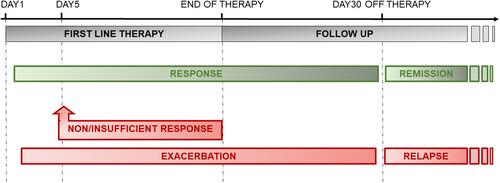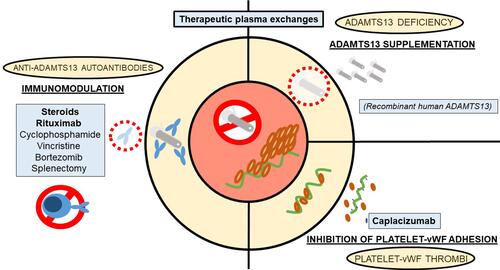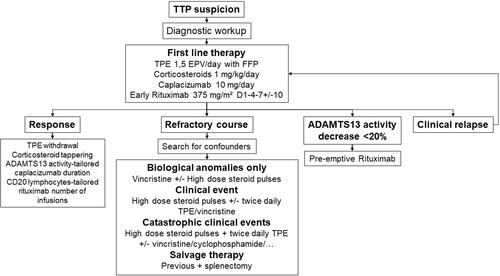Figures & data
Figure 1 Timeline of acute TTP management with favorable (green) and unfavorable (red) outcomes. Non/insufficient response is defined as failure to reach platelet rate >150G/L and/or LDH rate <1.5N and/or occurrence of new/progressive signs of ischemic organ involvement after 5 TPE sessions; Exacerbation is defined as recurrence of any sign of TTP after a phase of clinical response, up to 30 days after the end of therapy; Remission is defined as clinical response maintained over 30 days after cessation of therapy; Relapse is defined as the recurrence of any sign of TTP after remission (ADAMTS13 activity decrease or clinical/biological signs of thrombotic microangiopathy).

Table 1 TMA Differential Diagnosis
Table 2 Confounders for TTP Refractoriness
Figure 2 Pathophysiology, potential therapeutic targets and available therapy for the management of TTP.

Table 3 Therapeutic Options Currently Available for Unresponsive TTP Management

